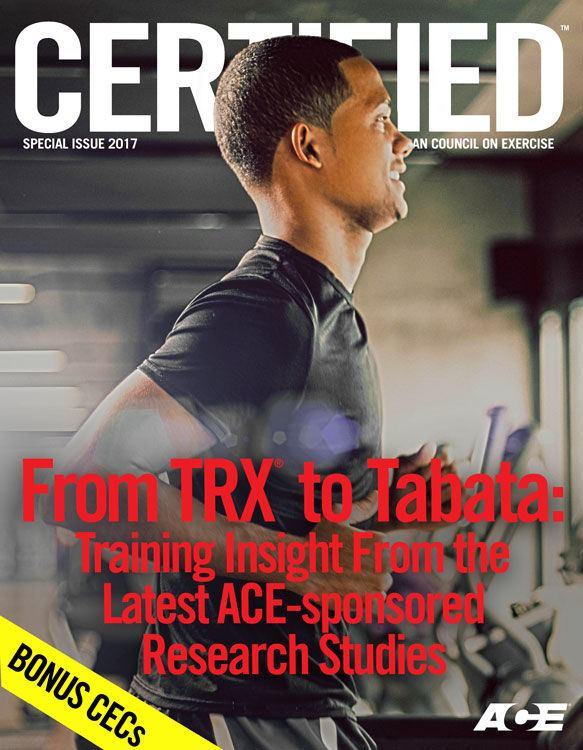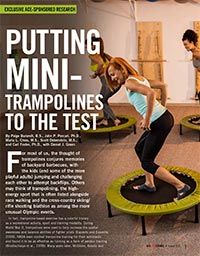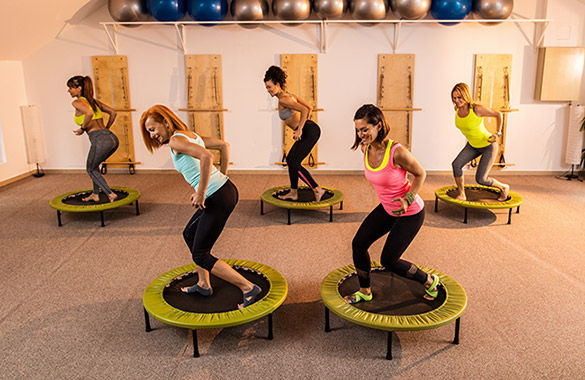
For most of us, the thought of trampolines conjures memories of backyard barbecues, with the kids (and some of the more playful adults) jumping and challenging each other to attempt backflips. Others may think of trampolining, the high-energy sport that is often listed alongside race walking and the cross-country skiing/rifle shooting biathlon as among the more unusual Olympic events.
In fact, trampoline-based exercise has a colorful history as a recreational activity, sport and training modality. During World War II, trampolines were used to help increase the spatial awareness and balance abilities of fighter pilots (Esposito and Esposito, 2009). NASA even studied trampoline training for their astronauts and found it to be as effective as running as a form of aerobic training (Bhattacharya et al., 1978). Many years later, McGlone, Kravitz and Janot (2002) reinforced these findings in a study that found no significant differences in maximal heart rate (HRmax), maximal oxygen uptake (VO2max) or energy expenditure when exercising on a mini-trampoline in comparison to treadmill running.
Other research (Edin et al., 1990; Gerberich et al., 1990) did not substantiate the results of those studies, however, calling into question the true effectiveness exercising on a mini-trampoline. In fact, there is little data supporting the efficacy of exercising on a mini-trampoline in terms of improving cardiorespiratory endurance and body composition.
To help fill this research gap, ACE enlisted the help of John Porcari, Ph.D., and his team of researchers in the Department of Exercise and Sport Science at the University of Wisconsin–La Crosse to determine the intensity of an individual mini-trampoline exercise routine and compare it to the established guidelines for cardiorespiratory endurance and caloric expenditure.
The Study
The subjects for this study were 24 apparently healthy college students who were recreationally active, exercising at least three times per week for the past six months. Each participant completed an incremental exercise test on a treadmill prior to beginning the study to determine his or her HRmax and VO2max (a common measure of physical fitness). Ratings of perceived exertion (RPE) were also collected during this preliminary test (Table 1).
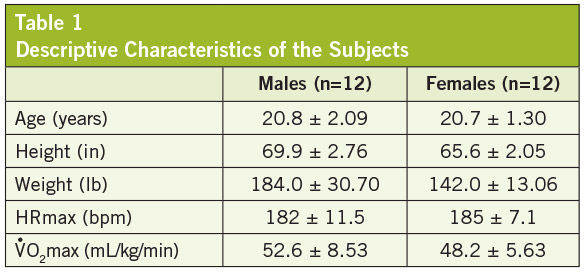
After learning common movements and getting comfortable on the mini-trampoline, the participants completed a monitored trampoline exercise session while following a routine designed by JumpSport (www.jumpsport.com). The 19-minute JumpSport exercise video featured motivational music and incorporated a variety of choreography and movements to create a full-body workout. Heart rates and VO2max were collected every minute and caloric expenditure was calculated from the VO2 data. RPE was also assessed every five minutes.
The Results
The subjects’ responses to the JumpSport mini-trampoline workout are presented in Table 2.
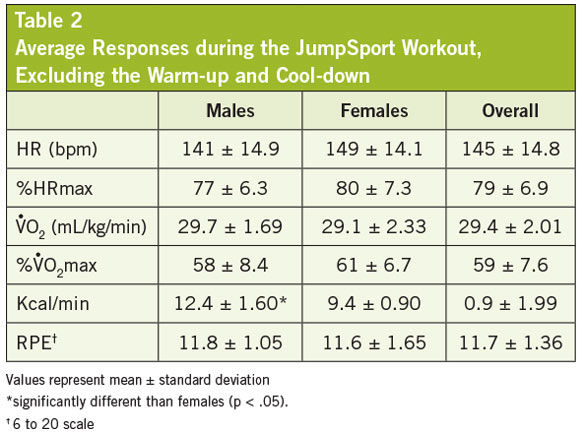
Relative heart-rate responses (%HRmax) of subjects during each minute of the workout are presented in Figure 1, while relative oxygen uptake (%VO2max) responses are presented in Figure 2. The boxed region in each figure indicates the current American College of Sports Medicine (ACSM) guidelines for improving cardiorespiratory fitness. ACSM (2014) recommends exercising at 64 to 94 percent of HRmax or 40 to 85 percent of VO2max five days/week for 30 to 60 minutes per day.


Remember, the purpose of this study was to determine if performing the mini-trampoline routine from JumpSport met ACSM guidelines for improving cardiorespiratory fitness.
Stated simply…yes, it does. During the workout portion of the routine (which eliminates data collected during the warm-up and cool-down), the average heart rate was 79 percent of HRmax and the average VO2 as 59 percent of VO2max. Both of these values fall within the ranges stipulated by ACSM.
The Bottom Line
It is clear that the JumpSport workout offered sufficient intensity to improve cardiorespiratory fitness over time. Of course, as with all exercise modalities, adherence over the long haul is the key to improving fitness and body composition. Exercising on the mini-trampoline seems to lend itself to ongoing participation for a couple of key reasons.
According to Dr. Porcari, the exercise intensities seen during this research are on the cusp of moderate to vigorous intensity. “We would expect participants to report ratings of perceived exertion of about 13 at this intensity level,” he reports, “but the subjects averaged an RPE of 11.7, or a light to moderate intensity.” This tell us that the mini-trampoline workout did not feel as intense as it really was. “This may be because, while the muscles are working hard, the trampoline makes the activity less jarring,” says Dr. Porcari. “The enjoyment factor may make things easier, as well.”
Other benefits of exercising on the trampoline may include balance training and spatial awareness—remember that early research with fighter pilots and astronauts? For now, the evidence for this is purely anecdotal. That said, working out on the trampoline requires you to react to an unstable surface while performing a wide variety of movements. This all makes sense, according to Dr. Porcari, but there is a lack of research in this area.
Of course, for most group fitness participants and other gym-goers, caloric expenditure is a key consideration when choosing an exercise modality. ACSM (2011) recommends burning 200 to 300 calories during each 30-minute workout in order to lose or manage weight. This equates to 6.7 to 10.0 calories/minute. During the workout portion of the JumpSport routine, men burned an average of 12.4 calories/minute, while women burned 9.4 calories/minute. Including the warm-up and cool-down in this calculation brings these numbers down to 11.0 and 8.3, respectively, both of which are still well within the range offered by ACSM. This level of energy expenditure is approximately equivalent to running 6 miles per hour on flat ground, biking at 14 miles per hour or playing football, basketball or ultimate Frisbee.
The participants in this study reported that exercising on the mini-trampoline was a lot of fun and that the JumpSport choreography was easy to learn. So why not add this enjoyable and effective workout to your training repertoire or group fitness schedule?
References
American College of Sports Medicine (2014). ACSM’s Guidelines for Exercise Testing and Prescription (9th ed.). Philadelphia: Wolters Kluwer/Lippincott Williams and Wilkins.
American College of Sports Medicine (2011). Position stand: Appropriate physical activity intervention strategies for weight loss and prevention of weight regain for adults. Medicine and Science in Sports and Exercise, 43, 459–471.
Bhattacharya, A. et al. (1978). Body acceleration distribution and O2 uptake in humans during running and jumping. Journal of Applied Physiology, 49, 881–887.
Edin, J.B. et al. (1990). Analysis of the training effects of minitrampoline rebounding on physical fitness, body composition, and blood lipids. Journal of Cardiopulmonary Rehabilitation, 10, 401–408.
Esposito, P.W. and Esposito, L.M. (2009). The reemergence of the trampoline as a recreational activity and competitive sport. Current Sports Medicine Reports, 8: 273–277.
Gerberich, S.G. et al. (1990). Analysis of the acute physiologic effects of minitrampoline rebounding exercise. Journal of Cardiopulmonary Rehabilitation, 10, 395–400.
McGlone, C., Kravitz, L., and Janot, J.M. (2002). Rebounding: A low-impact alternative. ACSM’s Health and Fitness Journal, 6, 11–15.
Why Does ACE Sponsor Fitness-related Research Studies?
This study was sponsored by the American Council on Exercise. For more than 20 years, ACE has commissioned independent research studies from major universities and trusted partners across the country, covering everything from infomercial fitness products to the effectiveness of some of the hottest trends in health and fitness. ACE is committed to investing in these studies as part of its mission to promote the benefits of physical activity and to protect people from unsafe and ineffective fitness products and trends. You can find more information about past ACE-sponsored studies, including research on the best abdominal exercises, kettlebell workouts and Zumba, by clicking here.





